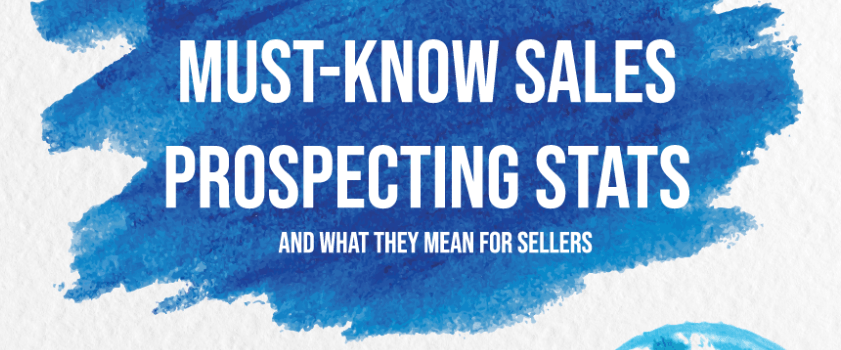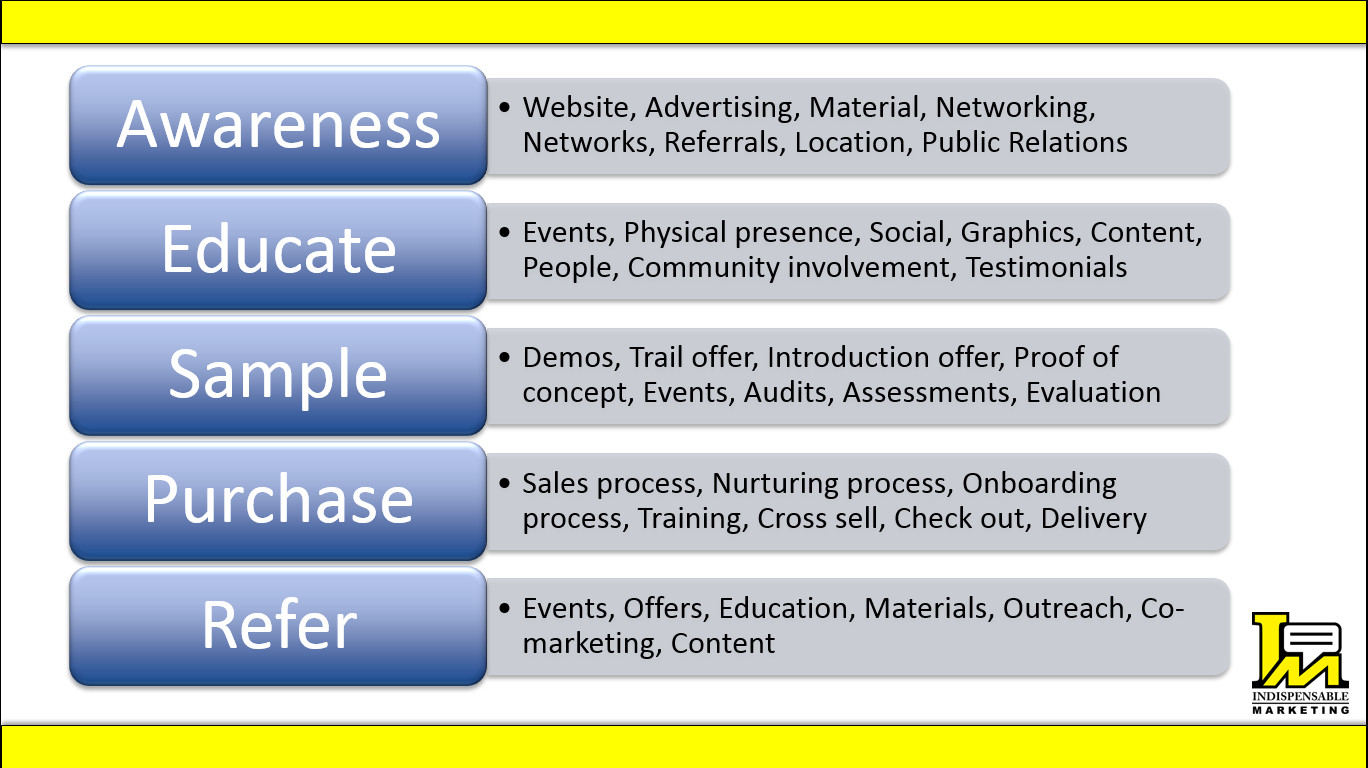5 Must-Know B2B Sales Prospecting Stats for Small Businesses
How many attempts does it take to break through to busy buyers?
What offers are most accepted?
Do cold meetings convert to new business?

This new benchmark report, Top Performance in Sales Prospecting , uncovered the answers to these critical prospecting questions. But for small business owners, you have another set of problems when it comes to B2B sales prospecting: limited time, attention spans, and resources.
This article will highlight 5 must-know stats for small businesses and how you can address these challenges.
#1. Problem Solving The Secret to Your Prospecting Success
62% of buyers want to hear from sellers when they are actively looking for a solution to solve a problem
There’s something to be said for a thorough, extensively understanding of your buyer’s world. When you’re taking the time to address the problems your prospects see and feel before offering your solution, there is little chance the activities you’re implementing to attract and convert them won’t resonate.
Insight into the problems prospects are having is key because very few people want what you sell. That’s not a blow to you or your business or your solutions. I’m sure all are remarkable. People want what they believe they will get, achieve, relieve, dodge, or acquire based on buying what you sell.
So, your job is to understand the problems prospects are trying to solve and match your solutions to those very specific problems.
The truth is people start the buying process on their own terms today via the internet, and people aren’t searching for your solutions, but they search every single day for ways to address problems they see and feel.
Small business owners that create their content, build their website and execute SEO practices around problem-solving will get in the pathway of their ideal client at a much earlier point – the point at which you can build the kind of trust needed to make your solution the obvious choice.
When prospects are looking to fix a specific problem, it’s important to tailor your message to specific problems they might have (do your research and you can find out).
#2. Meeting Acceptance and Connection
65% of buyers accept a meeting or otherwise connect when they find content on the best practice methodology based on the provider’s area of expertise
Let’s face it — organizations large and small have a problem standing out in our modern landscape. Products and services are largely undifferentiated to buyers, and trust is at rock bottom, especially for unfamiliar brands.
This sets the expectation for every organization to develop a set of foundational principles that their organization is built upon. Then turn each of those steps into the building blocks for creating a message for how their approach, process or method to solving their prospects and customers problem is unique.
This point of view and methodology must run through every element of content you create for generating awareness, educating, building trust, converting prospects and retaining customers. It’s the basis of your organizations presentations, newsletters, tradeshow material, special reports, whitepapers, webinars and speaking.
When you create and nurture a meaningful package of principles you also start to build a methodology that your prospects, can begin to understand, share and extend.
One of the greatest differentiators in business is your ability to lead through a consistent and valuable point-of-view and methodology that attracts prospects over the long haul.
You must be inspired to turn your way into THE way!
When you produce content around your point-of-view, you stand a much greater chance of building the credibility and expert status that comes from holding a unique approach, process or method to solving your prospects and customers problem.
You don’t need or even want everyone to agree with your point of view, but you must be inspired to build it.
#3.Why Your Buying Process Should Focus on Value, Not Services
96% of buyers ultimate purchase decision is influenced when a provider focuses on the value they can deliver to them
Today, giving value and offering insight is the game. If you’re a small business owner, marketer or salesperson, your perceived value is what allows you to take your game to the next level.
Now, don’t view the words value and insight to mean statistics or half way introductions – it’s about tipping the scale in your favor (leverage) – the kind that can build trust, attract new business, create more opportunities and shorten sales cycles.
So what are the companies that are bringing in new customers and growing their sales doing that’s different?
They’re narrowly focused on value creation and insight. In fact, 74% of B2B buyers choose the salesperson who was first to add value in their buying process.
Today, no matter what your business does it will sink or swim based on the value (perceived or otherwise) and insight it creates in a buyer’s life. Many firms default to adding features to products and services as a way to address value, and generic statics as a way to address insight, but the research shows the real impact in value creation and insight comes from strategically finding ways your business can deliver these two elements within the buying process.
The beauty of understanding value creation and insight at the strategic level, you can filter it into every tactical decision. This is where the most profitable work is done for organizations. When a market comes to value what you have to offer as the “obvious” choice you’re on your way to a premium pricing. Buyers will pay dearly for value and insight that helps them get more of what they want out of life.
Demonstrate “Value-Add” Behaviors – Showing up in person is one way (and a powerful way) for business owners and salespeople to show they are invested in the buying process, but there are other ways for you to add value in any interaction. I’ve identified four behaviors that send a strong message to buyers that you are invested in their success and adding value at every interaction:
- Responsiveness: Follow up in a thorough, accurate, and timely manner – both before and after meetings.
- Preparation: Do the required preparation work for the meeting (e.g., getting up to speed on the business, delivering what was promised based on prior meetings/conversations, etc.).
- Listening skills: Ask insightful questions and actively listen to understand the issues and challenges driving the buyer’s needs.
- Knowledge: Demonstrate an in-depth knowledge of solutions and services, and relate them to the buyer’s current business strategy and needs.
#4. Insight Over Information
92% of buyers ultimate purchase decision is influenced when a provider provides valuable insight related to my industry or market
I firmly believe that any business owner, or salesperson that attempts to work with an organization, regardless of size, can greatly increase the value they bring to an engagement by helping a customer or prospect analyze their own customer journey.
Provide value-added advice and insight by researching every stage of the customer journey an organization uses to interact with and move its prospects to customers.
What do they do to create awareness, educate prospects and customers, build trust, sample their offering, convert prospects to paying clients, and generate referrals?

#5. First Impressions Matter
82% of buyers look up providers on LinkedIn before replying to their outreach efforts
In business interactions, first impressions are essential. But the truth is we all don’t sell the same way we used to, and buyers certainly don’t buy the same way they were accustomed to. This means the way we make first impressions has changed.
Today’s prospects and buyers are invisible until they’re ready to purchase. They don’t call up a company and ask for a brochure or wait for a salesperson to come calling. They do their homework using search engines, ask their network online for suggestions and essentially create their own brochure.
Much of what you have to do to make a great first impression on a prospective buyer is create and publish content on LinkedIn.
That’s just the reality of a first impression today as prospects now turn to search engines and social networks when they need to solve a problem and they search online proactively gathering information. Your profile and content must show up there.
People have come to expect to find information about any product, service, company, individual, cause or challenge they face by simply turning to the search engine and social network of their choice. So, if they’re not finding content that you’ve produced that provides them that information, there’s a pretty good chance you won’t be found to make a first impression.
Content is now one of the top networking, marketing, and branding tools in the business world — reinforcing first impressions. Small business owners and entrepreneurs alike, aspire to use content to exhibit their brand, value proposition and facilitate lead generation in their business.
As a small business owner you can’t ignore the importance of well-crafted, SEO optimized and high-quality content that is easy for search engines to find and index, easy to share, attract links, creates a searchable and archivable body of work on a subject and will never be seen as inorganic by Google. Content can reinforce your brand image or establish critical perceptions in a potential customer’s mind. Read more on How to Create a LinkedIn Profile that Generates Leads




